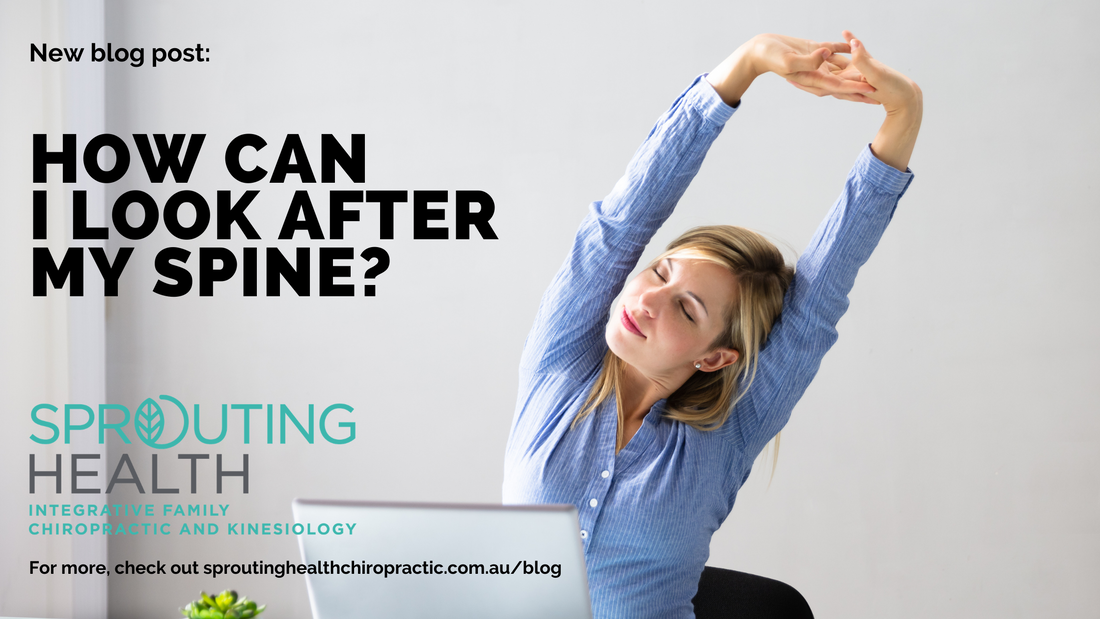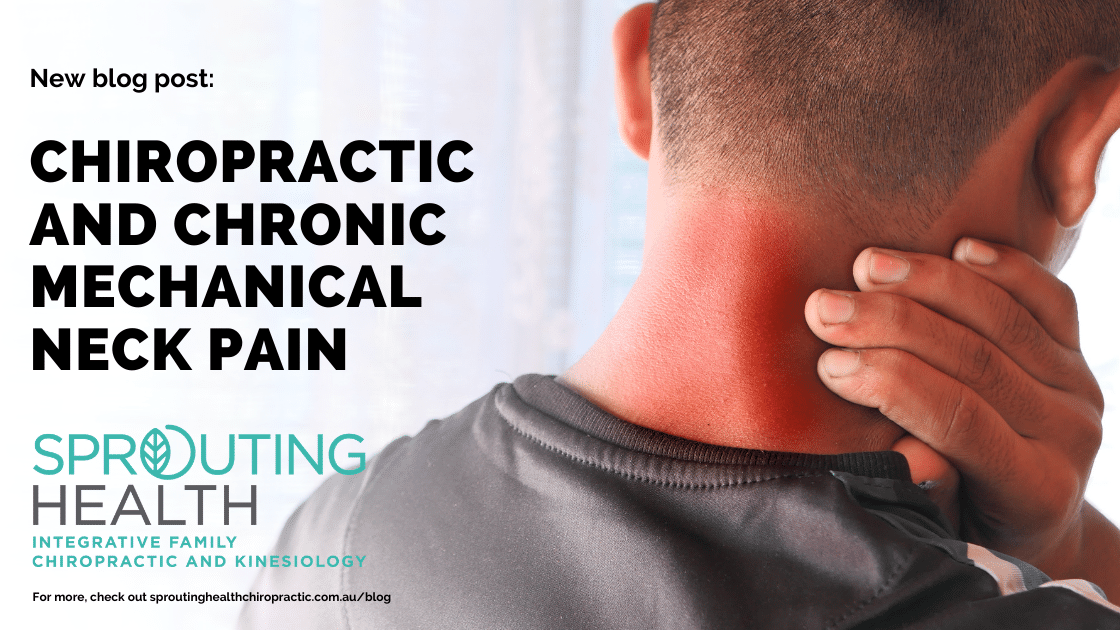|
1. Keep moving! Thought it can be tempting to vege out on the couch during the holidays, or slip into a couple of food comas during the festivities, it is important to keep your body moving and active. This could include a walk around the block, playing with the dog, or a game of backyard cricket! 2. Stretch! From previous blog posts, we all understand the benefits of stretching, including increasing flexibility and range of motion, improving blood flow to muscles, relieving tension, improving posture, prevention of pain, and sometimes stretching even helps to relieve stress. Some simple stretches you can do include a head tilt to loosen your upper trapezius or a cat-camel stretch to aid your core muscles – see below for instruction! Upper Trapezius Stretch 1) Sit up straight in a chair with your head and neck in a neutral position (shoulders straight, eyes forward), hold your arms relaxed on either side of your body. 2) Slightly tuck your chin down, then tilt your head down to the left until you feel a stretch down the right side of your neck (keep your eyes looking straight ahead). 2a) To increase this stretch, raise your left head and place it on top of your head (do not pull – you just want the weight of your hand to add a little extra pressure). 3) Hold this position for 30 seconds while breathing normally. 4) Return your head and neck to the neutral position. 5) Repeat these steps on the opposite side. 6) Perform these actions 2-3 times on either side. Note: if this position is painful or uncomfortable, do not proceed – immediately return to the neutral position. Cat-Camel Stretch 1) Start by setting up on all fours on a stable surface – ensure that your hand are in line with your shoulders and your knees are in line with your hips. 2) Drop your head down and (while contracting your abdominal muscles) pull your belly button up towards the ceiling. 3) Hold this position for 10 seconds. 4) Then, slowly raise your head up towards the ceiling while dropping your belly button towards the floor, arching your back. 5) Hold this position for 10 seconds. 6) Repeat 5 times in each position. Note: if this position is painful or uncomfortable, do not proceed – immediately return to the neutral position. 3. Prevention is best! Ensuring that you move appropriately to protect your body plays a huge part in pain prevention. When you’re lifting stacks of presents or moving your Christmas tree, remember to bend your knees and lift with your legs instead of your back. Avoid twisting motions (especially while carrying weight) and remember to move and stretch BEFORE you get stiff and sore. 4. Ask your chiro! If you’re concerned about anything over the Christmas break (previous issues, ongoing complaints, etc) ask your chiro on your last appointment before the break! REFERENCES
Galloza, J., Castillo, B., & Micheo, W. (2017). Benefits of Exercise in the Older Population. Physical medicine and rehabilitation clinics of North America, 28(4), 659–669. https://doi.org/10.1016/j.pmr.2017.06.001 Taylor, D., Binns, E., & Signal, N. (2017). Upping the ante: working harder to address physical inactivity in older adults. Current opinion in psychiatry, 30(5), 352–357. https://doi.org/10.1097/YCO.0000000000000349 Lee, P. G., Jackson, E. A., & Richardson, C. R. (2017). Exercise Prescriptions in Older Adults. American family physician, 95(7), 425–432. Hotta, K., Behnke, B. J., Arjmandi, B., Ghosh, P., Chen, B., Brooks, R., Maraj, J. J., Elam, M. L., Maher, P., Kurien, D., Churchill, A., Sepulveda, J. L., Kabolowsky, M. B., Christou, D. D., & Muller-Delp, J. M. (2018). Daily muscle stretching enhances blood flow, endothelial function, capillarity, vascular volume and connectivity in aged skeletal muscle. The Journal of physiology, 596(10), 1903–1917. https://doi.org/10.1113/JP275459
1 Comment
b Sprouting health chiropractic is not only a child friendly practice, we also look after older sprouts! One key area we look at especially is balance and fall risk! World Health Organisation stated adults over 65 years of age suffer the greatest number of fatal falls.(1) Research pointed out that chronic musculoskeletal pain is associated with poor stability.(2) Poor stability is considered as a risk factor for falls as is very important for gait (walking)!(2) Chiropractors and other health professions use a sit-to-stand test to identify an individual’s ability to maintain balance, measure lower extremity strength, and assessment of fall risk. Five Times Sit to Stand Test (FTSST) is a very easy test to try at home. All you need is a chair without arms, roughly 90 degree bend at the knee joint, and a stopwatch. Make sure someone is watching you while performing the test as a safety precaution. Simply cross your arms over your chest, sit up straight from a sitting position 5 times as quickly as you can, and measure the time on completion. The time exceeding the following can be considered to have worse than average performance: 11.4 sec (60 to 69 years), 12.6 sec. (70 to 79 years), and 14.8 sec. (80 to 89 years).(3) Research suggested further assessment if you excessed 12 seconds on completion.(4) Chiropractic care has a high level of evidence on chronic lower back pain management.(5) As well as a moderate level of evidence on other chronic musculoskeletal pain such as neck pain, headaches, shoulder pain, and lower extremities joint pain.(5) If you failed the FTSST, suffering from chronic pain, or generally have poor balance, talk to our chiropractors and see whether we can help manage your concerns, as there are other pathologies that may also affect your stability and balance. References
1.Organization WH. Falls 2018 [Available from: https://www.who.int/news-room/fact-sheets/detail/falls#:~:text=Each%20year%20an%20estimated%20646,medical%20attention%20occur%20each%20year 2. Kendall JC, Vindigni D, Polus BI, Azari MF, Harman SC. Effects of manual therapies on stability in people with musculoskeletal pain: a systematic review. Chiropractic & manual therapies. 2020;28(1):1-10. 3.Bohannon RW. Reference values for the five-repetition sit-to-stand test: a descriptive meta-analysis of data from elders. Perceptual and motor skills. 2006;103(1):215-22. 4. Tiedemann A, Shimada H, Sherrington C, Murray S, Lord S. The comparative ability of eight functional mobility tests for predicting falls in community-dwelling older people. Age and ageing. 2008;37(4):430-5. 5. Bronfort G, Haas M, Evans R, Leininger B, Triano J. Effectiveness of manual therapies: the UK evidence report. Chiropractic & osteopathy. 2010;18(1):1-33. Neck pain is a leading cause of disability in adults, and it is reported in up to 20% of adults. (1,2,3). When it becomes chronic, neck pain decreases the quality of life by having a negative effect on both private and professional life, and is also associated with a high level of morbidity (4). Do you or a loved one experience chronic neck pain? This is an important article that could make the world of difference to you. “3 out of 10 neck pain patients will develop chronic symptoms that last more than 6 months, whereas 34% will show symptoms for more than 12 months” (5,6,7) The origin of neck pain is usually from multiple sources, including poor posture during daily activities, physical activities relating to sports and work, and depression and anxiety (8). Mechanical neck pain is usually defined as generalised neck pain and/or shoulder pain with mechanical features such as having symptoms aggravated by maintained neck posture, movement or palpation of the neck muscles (9). When neck pain has lasted more than 3 months it is considered chronic (10). Chronic mechanical neck pain can affect many things which may include neck muscle weakness, reduced endurance with neck muscles, reduced range of motion of neck and neck reposition error with patients also identifying balance disturbance and oculomotor (Eye) disturbances (11,12). So it’s important to get on top of chronic mechanical neck pain and not let it linger on, therefore it is imperative to seek some form of care for it. In a recent research literature, where they looked at chiropractic treatment effect for chronic mechanical neck pain, 40 patients between the ages of 20-60 years were looked at, with one group receiving dry needling and another group receiving chiropractic care. In this small study it was found that chiropractic treatment was effective in terms of pain relief, increasing joint range of motion and decreasing the degree of neck disability among the patients (13). So chiropractic care may be a viable management plan for chronic mechanical neck pain, though further studies and a larger sample size would substantiate these findings to a better degree. If you want to find out if chiropractic may help manage neck pain for you or your loved ones, have a chat with one of our chiropractors to see how they can assist. “Making sure you are functioning optimally is vitally important for your overall health” REFERENCES
1.Cohen SP. Epidemiology, diagnosis, and treatment of neck pain. Mayo Clin Proc 2015;90(2):284–99. doi: 10.1016/j.mayocp.2014.09.008. 2.Moradi-Lakeh M, Forouzanfar MH, Vollset SE, et al. Burden of musculoskeletal disorders in the Eastern Mediterranean Region, 1990–2013: Findings from the Global Burden of Disease Study 2013. Ann Rheum Dis 2017;76(8):1365–73. doi: 10.1136/annrheumdis-2016-210146. 3.Woodhouse A, Pape K, Romundstad PR, Vasseljen O. Health care contact following a new incident neck or low back pain episode in the general population; the HUNT study. BMC Health Serv Res 2016;16:81. doi: 10.1186/s12913-016-1326-5. 4. Vernon H, Humphreys BK (2008) Chronic mechani- cal neck pain in adults treated by manual therapy: a systematic review of change scores in randomized controlled trials of a single session. J Man Manip Ther 16(2):E42–E52 5. Bertozzi L, Gardenghi I, Turoni F, et al. Effect of therapeutic exercise on pain and disability in the management of chronic nonspecific neck pain: systematic review and meta-analysis of randomized trials. Phys Ther. 2013;93(8):1026-1036. 6. Childs JD, Cleland JA, Elliott JM, et al. Neck pain: Clinical practice guidelines linked to the international classification of functioning, disability, and health form the orthopaedic sec- tion of the American Physical Therapy Association. J Orthop Sport Phys Ther. 2008;38(9):A1-A34. 7. Côté, P., Cassidy, J.D., Carroll, L.J. and Kristman, V., 2004. The annual incidence and course of neck pain in the general population: a population-based cohort study. Pain, 112(3), pp.267-273. 8. Heintz MM, Hegedus EJ. Multimodal management of mechanical neck pain using a treatment based classification system. J Man Manip Ther 2008;16:217-24. 9. Castaldo M, Ge HY, Chiarotto A, Villafane JH, Arendt-Nielsen L. Myofascial trigger points in patients with whiplashassociated disorders and mechanical neck pain. Pain Med 2014; 15:842-849. 10 . Ylinen J, Ha¨kkinen AH, Takala EP, et al. Effects of neck muscle training in women with chronic neck pain: one-year follow-up study. J Strength Cond Res 2006;20:6-13. 11. Lytras, D.E., Sykaras, E.I., Christoulas, K.I., Myrogiannis, I.S. and Kellis, E., 2020. Effects of Exercise and an Integrated Neuromuscular Inhibition Technique Program in the Management of Chronic Mechanical Neck Pain: A Randomized Controlled Trial. Journal of Manipulative and Physiological Therapeutics. 12. Cheever, K.M., Myrer, J.W., Johnson, A.W. and Fellingham, G.W., 2017. Understanding the complete pathophysiology of chronic mild to moderate neck pain: implications for the inclusion of a comprehensive sensorimotor evaluation. Journal of Back and Musculoskeletal Rehabilitation, 30(5), pp.991-997. 13. Aki, S., Özden, A.V., Alptekin, H.K. and Alptekin, J.Ö., 2020. Short-term effects of chiropractic application and dry needling treatment on chronic mechanical neck pain. Manuelle Medizin, 58(4), pp.237-245. |
AuthorBlogs by the team at Sprouting Health Archives
July 2024
Categories |




 RSS Feed
RSS Feed
